I took the bus from Clapham Junction to Brixton on my way to photograph a protest by Stop Killing Londoners against the terrible levels of air pollution in London. And it pulled up in a queue of traffic leading up to the traffic lights by the Northcote pub. The lights changed and we moved forward a few yards. Then back to red. Eventually the lights changed again, but we hardly moved. On the next green we moved forward a little, but I think it was the fourth green light before we finally reached the junction and our 37 bus took the left turn towards Clapham.
I don’t know what held us up, but it isn’t unusual to have a fairly long wait here, as I’ve found on many occasions on this route which I’ve been riding occasionally for over 40 years. Clapham High Street, where the bus waits to make a right turn can also cause similar hold-ups. And though the exhaust fumes from cars and buses are generally invisible, they are still lethal, part of the toxic air pollution that leads to almost ten thousand premature deaths in our city every year, as well as a great deal of suffering by the many more people suffering from lung diseases.
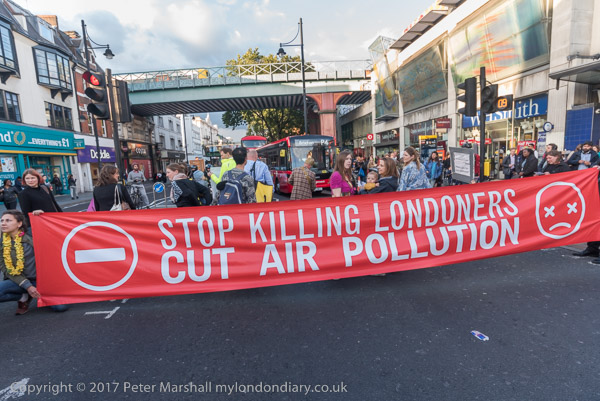
Back when I was young, air pollution in the city was rather more visible, and made its presence felt and seen at certain periods of the year as ‘pea-soupers’, dense and acrid fogs, which hung around for days and sent many to hospitals and their deaths. Thanks to the Clean Air Acts which banned the burning of coal, we no longer get this, but today’s pollution is more insidious, and keeps at high levels throughout the year peaking dangerously at times.
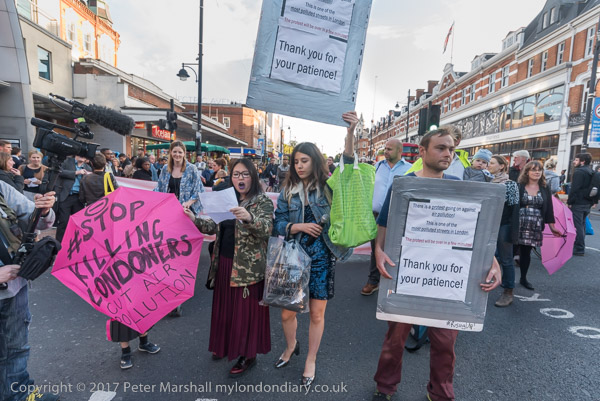
In 2017, Brixton Road in the centre of Brixton reached the annual limit for the year allowed under EU Regulation only five days after the start of the year, and over the whole year the street was the second most polluted in the capital (narrowly beaten by Putney High St.) So it was an appropriate location for a protest by ‘Stop Killing Londoners’, (SKL), a group that is trying to force London’s Mayor to take urgent action to cut air pollution.
Sadiq Khan has expressed concern about pollution, and there are some cautious half-measures being put into effect, but not the kind of drastic action that is needed to really tackle the problem. SKL believe that by mounting high-profile protests, and if necessary getting arrested for doing so, they will force the the Mayor, TfL and the government to act more decisively.
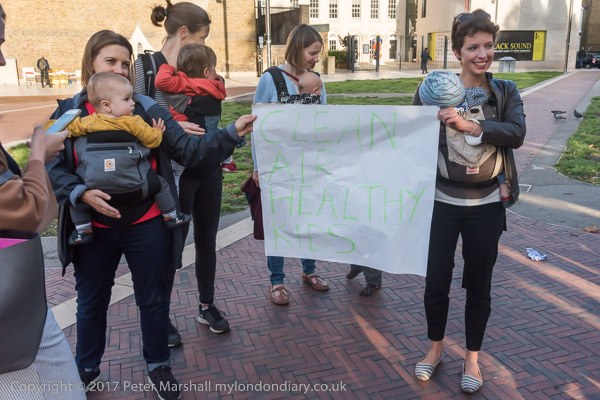
The action at Brixton was the first in South London, and the first that a number present had taken part in, and the protesters included several young mothers with children, who suffer disproportionately from air pollution. They went onto the pedestrian crossing outside Brixton Underground Station with their banner and blocked the south-bound carriageway for around 5-10 minutes, little if at all longer than my hold-up in Battersea on the way to the protest.
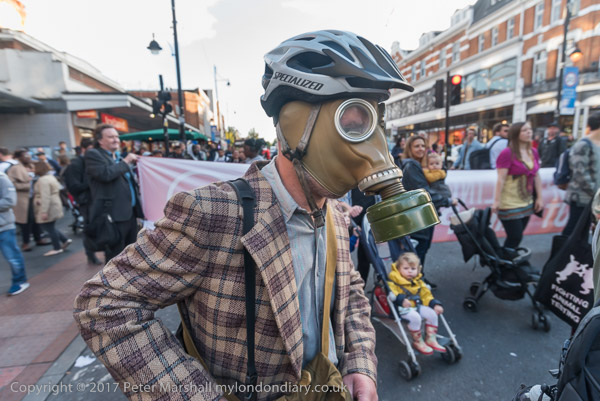
Despite telling the drivers what they were doing and why, and assuring them that they would not be held up for long, there were a few motorists who became rather angry. Few if any took the advice to cut their engines while waiting to reduce the pollution. There were others, including some pedestrians and cyclists who congratulated them too. After the short road block they went back onto the pavement and let the traffic clear.
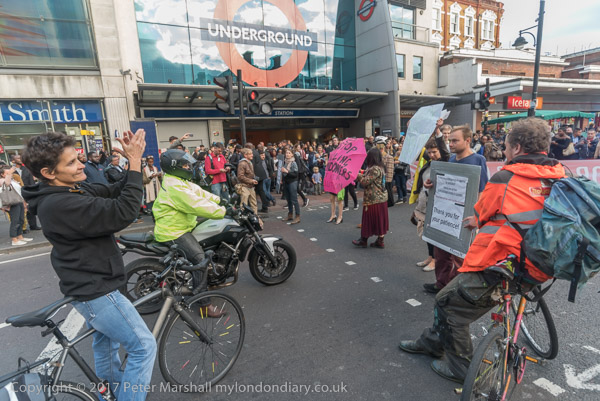
Police then appeared and came to talk with them, but after a short conversation when the protesters assured them they were only going to make another short protest before leaving they walked away and watched from a distance. As promised there was a second short protest and then the campaigners dispersed, and I caught my bus back to Clapham Junction, this time without delays.
There is simply too much traffic in London, and though it is not the only cause of air pollution it is the major one. More drastic action is clearly needed. There does need to be a much greater push to provide safe cycle routes, to get people out of cars and onto cycles, and for many it is the dangers of cycling on roads with busy traffic that stops them getting on their bikes. We also need improvements in public transport, and lower costs, particularly for rail services, which are so much more expensive in London than in most other cities. Increasing the area covered by the congestion charge would help a little, though would penalise those on lower incomes. Other cities have banned private cars with odd or even registration numbers on alternate days, and even banned all private cars from large areas. Central London has too many taxis, private hire vehicles and tourist buses, and there are more places where service buses could be given priority or allowed to take short cuts.
Air Pollution protest blocks Brixton
______________________________________________________
There are no adverts on this site and it receives no sponsorship, and I like to keep it that way. But it does take a considerable amount of my time and thought, and if you enjoy reading it, a small donation – perhaps the cost of a beer – would be appreciated.
My London Diary : Buildings of London : River Lea/Lee Valley : London’s Industrial Heritage
All photographs on this and my other sites, unless otherwise stated, are taken by and copyright of Peter Marshall, and are available for reproduction or can be bought as prints.
To order prints or reproduce images
________________________________________________________